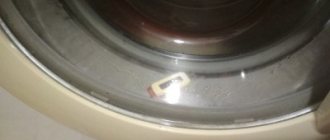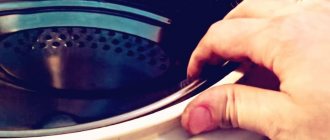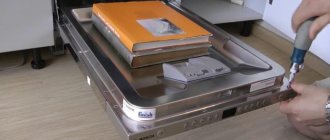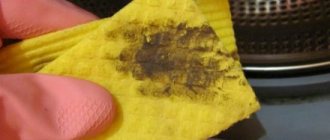A passport is the main civil identification document. It is used when receiving municipal and government services. There is no way to do without this paper after reaching the age of fourteen. What to do if you washed your passport? Is it possible not to re-register a personal ID? And how can I request a new copy of the documentation? We will try to understand all this and more further. In fact, everything is simpler than it seems. And citizens do not always have to panic and think about reissuing an identity card.
When not suitable
Did the person wash his passport in the washing machine? What to do in such circumstances?
To give the correct answer to a question like this, a citizen must understand when reissue of an identifier is required. This is usually necessary if:
- there are third-party marks in the passport;
- seals, inscriptions and other records have become worn out/smudged/become illegible;
- text is not visible on identifier pages;
- the passport is torn or “colored”.
In all of the above cases, you will have to think about a complete re-production of the document. We'll talk about how to cope with such a task later.
How will washing affect their condition?
Most often, money that has suffered from mechanical stress when washing clothes does not lose its solvency.
What can happen to paper banknotes?
Washed banknotes naturally lose their original appearance after washing.
However, they retain their payment status. This is due to the use of special paper and special durable paint for their manufacture, which provide the money with sufficiently high strength.
Their usual appearance may change if:
- bleach was used for washing, which will cause the paint on paper bills to fade slightly;
- the washing powder contained chlorine or aggressive components to remove stains;
- clothes could fade, causing paper money to take on an unusual color.
The appearance of paper money remains virtually unchanged if it remains in your pocket during the washing process. This eliminates the possibility of their deformation and transformation into torn fragments. Even in the event of damage and rupture, serial numbers are retained, which allows you to restore the value of banknotes by contacting banking institutions.
What will happen to the coins?
Finding coins in the drum after washing is fraught with consequences not so much for metal money as for the washing machine.
Small items may damage the drum. Therefore, coins must be found and removed to avoid repeated negative impact on the inner lining of the drum.
It is recommended to do the following:
- Rotate the drum by hand, inspect and feel its inner surface.
- Check to see if coins are stuck in the rubber seal, that is, in the hatch cuff.
- Inspect the drain pump filter. It is located at the bottom of the machine body. This is a small panel equipped with a protective cover. You need to open it by scrolling counterclockwise and remove the coins, if there are any.
Metal money may be slightly deformed and nothing more. In addition, they will have an unpleasant odor.
First actions
What to do if you washed your passport? Unfortunately, most often such an event ultimately leads to the need to re-register documentation. But sometimes you can avoid this operation.
What to do if you accidentally washed your passport? To begin with, it is recommended:
- Turn off the washing machine immediately after detecting the ID in the wash. The sooner this is done, the better.
- Remove the passport and dry it. It is advisable to weigh the document down with something heavy while drying.
- Once the ID is dry, review all pages of the document.
If after these steps the general condition of the passport has not suffered too much, you can continue to use it. The main thing is that all inscriptions, stamps and seals are legible. A slightly crumpled ID cover does not affect its validity.
I washed my passport in the washing machine - what to do: step-by-step instructions and recommendations
You will always have time to replace the document, so first you should try to do everything possible to revive it. To avoid making irreparable mistakes, follow the following sequence of actions:
- First, very carefully remove your passport from the pocket in which it was washed and carefully flip through the damp pages to assess the level of damage caused. If the ink does not flow and all the stamps remain in place, you are lucky and can safely proceed to the next steps.
- Carefully separate the wet pages of the ID card and place dry sheets of clean white paper between them without any writing, otherwise this may risk imprinting information on the document. Paper towels will also work.
- Be sure to remove your passport away from any heat sources, be it radiators or convectors. It should dry naturally.
- Change the paper between pages every thirty to forty minutes, this way the moisture will be absorbed faster and the passport will dry more evenly.
- Close the completely dry ID card and place it under an even, heavy press for at least half a day. This will help straighten the pages, and your passport will be as good as new.
Where to go
Have you washed your passport? What to do? Where to go for help in this case? Let's assume that the document in question was seriously damaged during washing. That is, it needs to be replaced.
A similar service is provided by various government bodies and services. Namely:
- multifunctional centers;
- services such as “My Documents” and “One Window”;
- migration departments;
- Federal Migration Service of the Russian Federation;
- passport offices;
- passport and visa centers.
You can request an ID through GosGosuslugi. Just to use such a web resource, you will first have to register and activate an account.
Warnings
It’s not difficult to straighten crumpled paper yourself. However, before you begin the procedure, you need to read the following important warnings:
You cannot iron paper without fabric. The paint may melt and stick to the surface of the iron or ironing board.- Do not wet the sheets too much. The thinner they are, the higher the risk of damage.
- Do not straighten the paper with a hair straightener or similar electrical equipment.
Their temperature is too high, so the document will be hopelessly damaged.
Fine for damage
What to do if you washed your passport in a washing machine? It is problematic to give an unambiguous answer to such a question. The thing is that you first have to dry the ID and look at its condition. It is possible that the passport will be in good condition. This means that it can be used further. But it may also happen that the ID card becomes damaged, and this will lead to its mandatory replacement. It is the second scenario that we will focus on.
What to do if you washed your passport? It is worth remembering that by law citizens are required to take care of their documents. For their damage you will have to pay a fine. True, not always. Migration services can issue a fine to the violator in the amount of 100 to 300 rubles. And nothing more.
If a person applies for a passport due to a damaged one, and he is fined more than three hundred rubles, he can:
- don't pay;
- go to court or to a prosecutor to protect your rights and interests.
In any case, a fine payment exceeding the specified limits is a serious violation on the part of law enforcement and migration authorities. Every citizen of the Russian Federation should remember this.
What is the acceptable level of damage?
The current legislation does not provide specific guidance on what damage to an identity card is critical and determines the degree of unsuitability of the document. There are only recommendations for replacing it if it is worn out. Therefore, here you need to rely on external parameters of the document state.
If basic data remains legible in the washed passport, such as: full name, date and place of birth of the owner, series and number of the document, as well as the day, month, year of its issue and all stamps, the identity card is considered valid. Moreover, if you contact any authorities, you may be advised to replace your passport, but in no case have the right to refuse to accept it.
Brief guide: applying for a passport yourself
What to do if you washed your Russian passport? As we have already said, most often a person has to apply for a new copy of documentation. It is proposed to do this in different ways. For example, by personally contacting the authorized bodies.
Under such circumstances, a negligent citizen will have to:
- Prepare a certain package of documents. It will change slightly depending on the situation.
- Pay for services for reissuing an identity card.
- Contact the authorized bodies with a request to re-issue your passport.
- Wait a while.
- Pick up the finished ID at a pre-agreed time.
When applying for a passport, you can request a temporary sample document. The citizen will be given a standard form, which can replace a permanent identity identifier.
Temporary ID
What to do if the passport replacement has not yet occurred, but the document needs to be presented somewhere? To resolve the problem, a temporary identity card is issued.
To obtain it you will need 1 more photograph of 35mm by 45mm. An employee of the Ministry of Internal Affairs will issue a document within 10 minutes immediately after submitting an application for a passport. The certificate is valid for 2 months. Upon separate application, this period can be extended.
Such a document is used for presentation to government agencies, purchasing air tickets, etc. But there are some restrictions, for example, a citizen will not be able to obtain registration or confirm his registration address if necessary.
What documents need to be prepared?
To replace your ID you will need:
- birth certificate (if the original is not preserved, you need to contact the civil registry office to issue a duplicate);
- photo 35x45 mm black and white or color, where the person’s face is frontal (the photo must be taken at the same age as the applicant on the day of application);
- a washed document that needs to be replaced.
Documents are also submitted to confirm other information about the person. If available, the following must be provided:
- birth certificates of children (only needed if children are under 14 years old);
- a document issued at the military registration and enlistment office (registration certificate, military ID or other);
- document confirming marriage;
- divorce certificate.
The citizen submits original documents, not copies. An employee of the Ministry of Internal Affairs will issue a certificate stating that he has received the relevant certificates. The originals will be returned after the procedure is completed.
A receipt confirming the transfer of state duty to the budget is provided at the request of the person. If all the details have been entered correctly, the payment will automatically be displayed in the electronic system, and the Ministry of Internal Affairs officer will see it independently.
Payment for passport replacement
To replace a new ID instead of a washed one, you need to pay 1,500 rubles. You can transfer money:
- via Internet banking;
- online on the State Services website;
- at a branch of any bank;
- using a wallet of an electronic payment system (for example, Yandex.Money);
- through another service that accepts payments.
A person will receive a 30% discount on the fee amount if he submits an application electronically - through the State or similar. A receipt for the smaller amount will be automatically issued.
Application Form
The application for a passport replacement shall indicate:
- code of the department of the Ministry of Internal Affairs where the passport will be replaced;
- details of the washed ID (series, number, date of issue);
- Full name, gender;
- Date and place of birth;
- marital status (if a person is married or divorced, the full name of the wife/husband, the date of marriage, the name of the registry office where the certificate was issued are indicated);
- FULL NAME. parents;
- place of residence (region, town, street, house, apartment);
- place of current stay (indicated if the application for a replacement passport is not submitted to the registration address);
- contact phone number and email (if available);
- the fact of being a citizen of another state;
- requirement to replace passport;
- the basis for replacement is damage;
- date of application and signature of the citizen.
The official records in the appeal:
- list of submitted documents;
- your full name date and signature.
The form further indicates:
- results of inspections, if any;
- information about requests received and the reasons for sending them;
- information about the destruction of the passport (number and date of the act of destruction, name of the migration department that carried out this).
When a person receives a passport after replacement, he signs the same application in the appropriate boxes of paragraph 11.
The document must be completed by hand in legible handwriting. Corrections and blots are not allowed.
Other papers
But this is far from a complete list of components necessary for re-issuing a passport. Additionally you will have to prepare:
- Marriage certificate;
- certificates of divorce;
- extracts about the change of name, surname or patronymic (from the registry office);
- conclusions about gender reassignment.
If you want to include information about minor children under 14 years of age in your civil passport, you will have to prepare their birth certificates. There is no need to pay extra for such an operation.
Important: all listed papers will have to be brought along with their copies.
What to do with damaged money
It’s unpleasant, but sometimes this happens - a banknote, or several, or a pack is damaged. In most cases, as they say, it is their own fault - they washed it, poured paint on it, and left it to mold in the basement. What now – count losses? Not always.
Damaged banknotes can be roughly classified into one of three categories:
- which must be accepted in trade enterprises as a means of payment,
- which must be exchanged at credit institutions for new banknotes,
- which cannot be exchanged.
Broken but solvent
The cashier at the store must accept your banknote with minor damage. Torn corners, small stains of paint, punctures, inscriptions, minor abrasions are not a reason for refusal. Even if you glue a banknote torn in two together, you can still pay with it. However, there is a chance that you will not be able to convince the cashier, then the bill will have to be changed at the bank.
They won’t accept it in the store, but they will exchange it at the bank.
If your bill is not accepted at the point of sale or if the damage is objectively great, you can change the money at the bank. However, the bank will also not accept any banknotes; the law sets out clear solvency criteria.
The banknote to be exchanged must retain at least 55% of its area. Moreover, this does not have to be one whole fragment - the available pieces of one banknote can be glued together. The bank will exchange the bill, even if it is assembled from many small fragments.
Who would have thought, but the bank will even accept two halves of different bills. True, there are conditions: there must be only two pieces, and each of them must be no less than 50% of the whole bill. Well, the denomination of the banknotes from which these fragments remain must be the same.
It happens that when checking banknotes in a currency detector, their “incorrect” glow in ultraviolet light is detected. This can happen if you wash money in your clothing pocket. The bank should give you a new one instead of such a banknote.
There is a chance to exchange even heavily damaged money with unreadable details if this happened as a result of a natural disaster, accident or fire. Along with banknotes, you must provide documents about the incident to the bank (accident report, fire certificate). The bank will send all materials for examination and exchange to the Bank of Russia.
Exchange procedure
There shouldn’t be any particular difficulties: come to the bank with damaged money and the cashier will examine it. If he has no doubts about the authenticity and solvency of the banknotes, you will be immediately given new money. There is no need to fill out any documents, and no commission should be charged for this operation.
But if there are doubts, then the banknotes are sent for examination to the Bank of Russia. In this case, you will have to write a statement in free form and make an inventory of the damaged banknotes. The application should indicate how to transfer new money to you if the solvency of the damaged bills is confirmed. The examination can take from several days to a month. Yes, you will have to wait, but this procedure is also free for you.
Unfortunately, if your money is so damaged that it does not meet the solvency criteria, you will simply have to part with it.
Foreign currency
In the event of damage to banknotes of other countries, there is much less reason for optimism. The law does not oblige banks to exchange damaged currency. If a credit institution carries out such operations, it charges a commission for them. Banknotes are sent abroad for examination, and the examination period can take a long time.
Price
What should I do if I washed my passport with a visa? These documents need to be restored as soon as possible. Otherwise, you may encounter serious problems.
How much does it cost to re-register a personal ID in Russia? At the moment, the state duty for this act is 2,500 rubles. This is what they pay for a lost, damaged or stolen passport. In other cases, exchanging a personal ID costs only 300 rubles.
Important: it is better to pay the fee into the state treasury before contacting the authorized bodies with an application in the established form. This will save you a lot of time and effort.
Cargo
You can smooth the paper using a weight. Under the weight of the press, the folds will straighten out. For this purpose, you can use such improvised items as:
- An encyclopedia or other massive book. To achieve the best effect, several volumes are placed on the crumpled sheet at once.
- Heavy household appliances or furniture.
- Equipment for sports.
Having chosen a suitable item, you need to be guided by the following action plan:
In order for the paper to smooth out better, it needs to be slightly moistened.
Do not place the sheet under running water. It is better to use a spray bottle, holding it at a distance of 30-40 cm from the object. If you don’t have a spray bottle on hand, you can gently blot the paper with a damp cloth.- Water should be sprayed onto the back of the document, this will prevent damage to the paint.
- The wet sheet is placed on a clean material that will act as a blotter. Regular napkins work well for this purpose.
- In this form, the paper is placed under a load.
The result will be obtained in 12 hours . Sometimes, after the specified period of time, the sheet remains wet. In this case, you need to change the napkins, leaving the document under the press for another day. During this time, even a heavily wetted sheet will dry out and straighten out.
Do not dampen paper that has watercolors, aqueous ink, or chalk on it. It is placed under a dry press. The heavier the item, the better.











